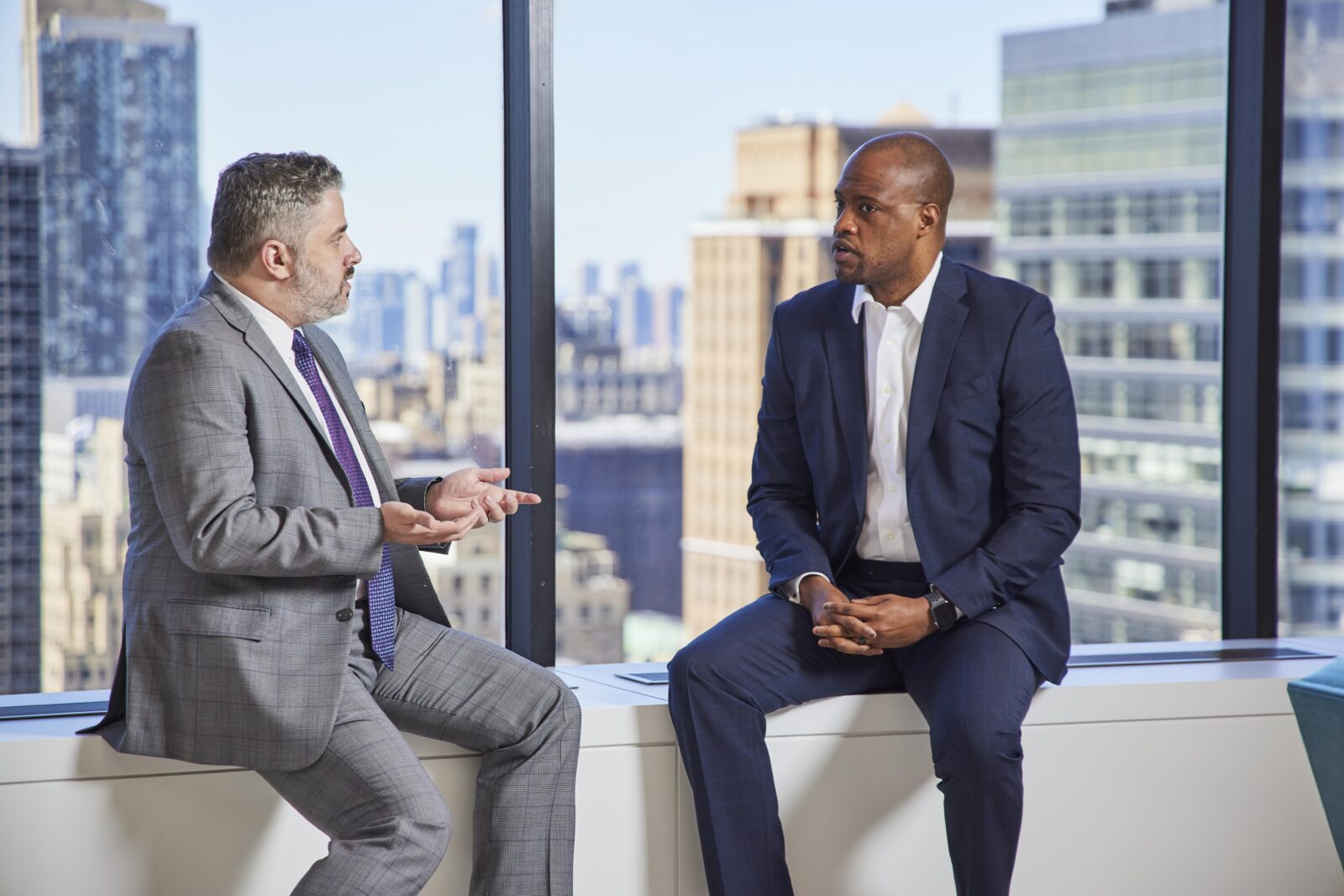
Vinson & Elkins Partners Lawrence Elbaum (left) and Patrick Gadson (right)
By Lawrence Elbaum and Patrick Gadson
Fall is fast approaching, so most major US public companies have held their 2024 annual meetings. But, while temperatures are sure to cool in the coming months, the same can no longer be said for the shareholder activism environment.
In years past, companies generally saw the fall as “peacetime”: A post-meeting respite to regroup from tense settlement negotiations and any proxy battles, evaluate their long-term strategies, and shore up their defenses before any activists come knocking in the winter and spring.
These days, however, there is no rest for the weary. Armed with bold proposals and sophisticated tactics, activists are increasingly surfacing outside that conventional pre-meeting window — sometimes just weeks after their target company’s last annual meeting.
Companies can’t afford to let their guards down. But what should they be watching for? Here are three key questions we have our eyes on.
Interest Rate Cuts: Will Activists Shift Their Focus?
Tighter monetary policy in recent years has driven up the cost of capital, weakening M&A activity and leading many activists to focus their campaigns on operational, strategic, and governance changes that they contend will unlock value for shareholders of their target companies.
Unlocking shareholder value will always be a key thesis for campaigns grounded in financial performance. But in the coming months, we could see a shift in how some activists work toward that end: Calling for companies to break up divisions, spin off subsidiaries, or sell themselves outright.
The case for this shift is straightforward. With inflation falling and the job market softening, many analysts expect the Federal Reserve to begin cutting rates in September.
The resulting decline in financing costs will likely re-ignite the M&A market, and should enable activists to find more buyers willing to take up their cause. Of course, none of this is to suggest that activists will abandon conventional campaigns entirely. But if companies face new activist demands to sell or divest, they shouldn’t be surprised.
ESG: Can Institutional Investors Fly Under the Radar?
Not long ago, shareholder proposals advancing environmental and social causes enjoyed sky-high support. Today, that support has cratered. Among S&P 1500 companies, support for climate- and DEI-related proposals have each fallen by half since 2021, according to the EY Center for Board Matters.
Several factors are at play here. One is that environmental and social proposals have generally grown more prescriptive, making it harder for activists to drum up support. Another is that many companies once perceived as weak on sustainability have ramped up their efforts to improve, leaving activists with fewer easy targets.
Perhaps the most important factor involves institutional investors. These global asset managers own massive shares of US public companies, and thus similarly massive sway in the success or failure of activist campaigns.
But, as ESG has become a political football in recent years, institutional investors have faced heavy fire from critics who say that ESG investing runs counter to shareholder interests, leading institutional investors to become far more selective in the environmental and social proposals they support.
This criticism likely won’t subside soon, yet institutional investors have other ways to push their environmental and social priorities. Targeting specific directors, especially influential committee chairs, can send a message just as powerful as supporting a proposal, while potentially drawing less unwelcome attention.
Will institutional investors take up this tactic? New data suggests some will. A third of investors surveyed by EY this year said that, if they were to have concerns about a board’s oversight, they would be more likely to vote against specific directors than to vote for a related shareholder proposal.
This risk is one reason why shareholder engagement is so critical — through both formal conversations and robust disclosure. Companies that can link each board seat to the company’s strategic direction — and that explain the value that each director brings to the business — stand the best chance of keeping shareholders on management’s side.
Universal Proxy: Will the Starbucks Contest Open the Floodgates?
When the SEC adopted its universal proxy rules in late 2021, it aimed to “put investors voting in person or by proxy on equal footing.” In practice, the rule’s impact could turn out to be far more expansive, making it easier for groups with small stakes in a company to advance a single-issue campaign.
That’s in essence what happened in Starbucks’ recent proxy contest, where the Strategic Organizing Center (SOC) — a coalition of labor unions — nominated three director candidates as part of its efforts to organize the company’s workforce.
SOC owned about $16,000 of Starbucks’ $105 billion market cap — a small, by any measure, .00000015 percent of its shares, and nowhere close to a stake that has historically been seen as large enough to align activists with companies’ shareholders at large. Yet many believe the universal proxy rules incentivized SOC to wage its robust campaign.
Under the rules, each side in a contested director election must use a proxy card that includes both the company and dissident nominees, so proxy voters can now select candidates from both slates, rather than having to choose one slate or the other. This dynamic worked to SOC’s advantage, putting individual directors in greater jeopardy and incentivizing Starbucks to engage.
SOC ultimately withdrew its nominations, but don’t underestimate the campaign’s impact. Indeed, the coalition drew outsize media attention to its cause — which would have been unlikely without the pressure mechanism created by the universal proxy rules.
This outcome will not be lost on advocacy groups — labor-focused or otherwise. Companies should prepare for the possibility that even their smallest shareholders try to follow in SOC’s footsteps.
Editor@CorpGov.com






